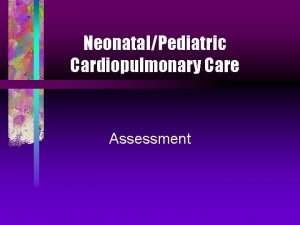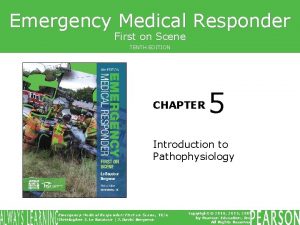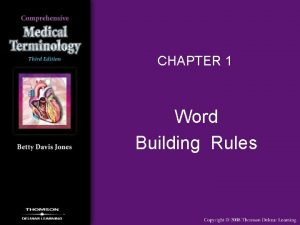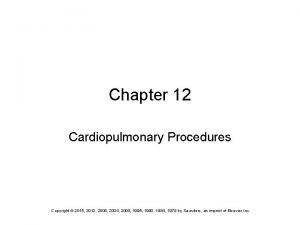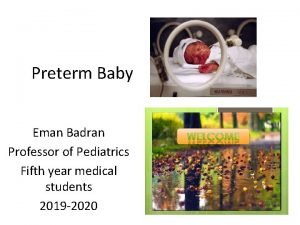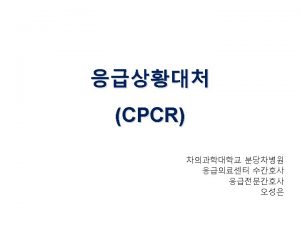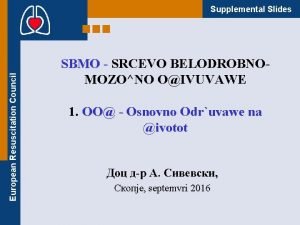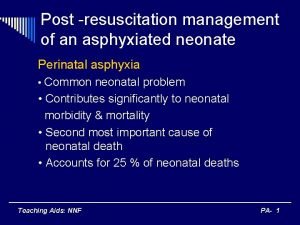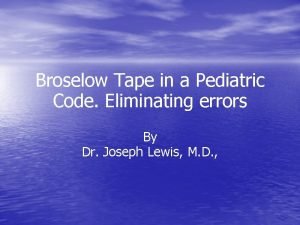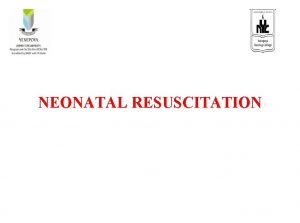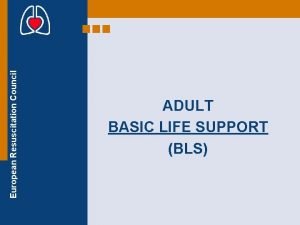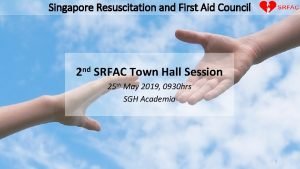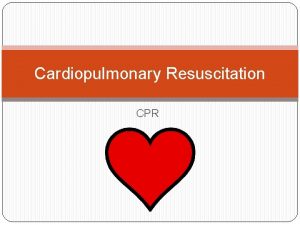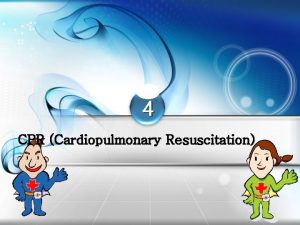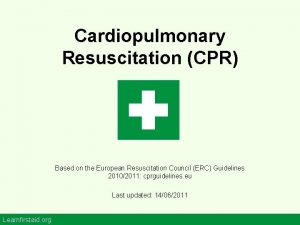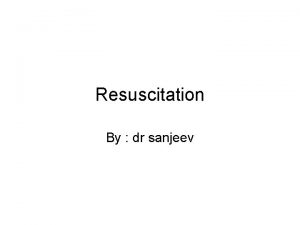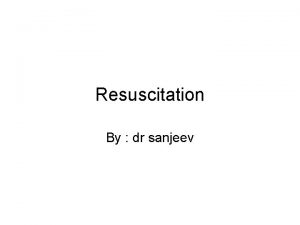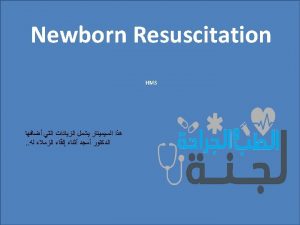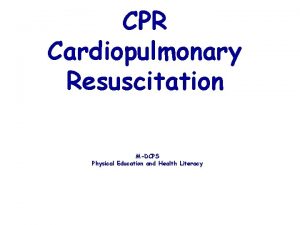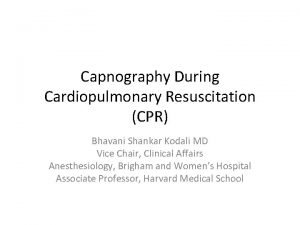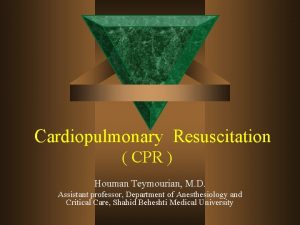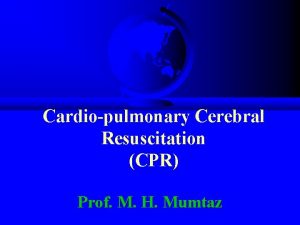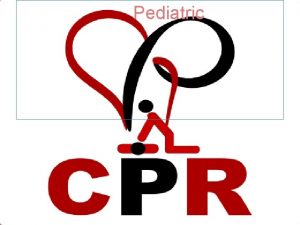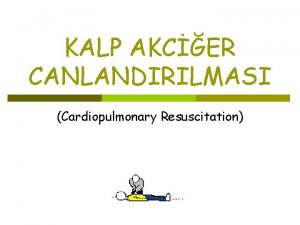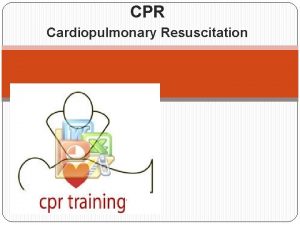CPR CPR n What is CPR Cardiopulmonary resuscitation



















- Slides: 19

CPR

CPR n Ø What is CPR? Cardiopulmonary resuscitation- a lifesaving technique in which a heart has stopped is forced to pump blood to the body by means of applied pressure.

CPR n n n Always when you come upon a scene you need to do your “check, call, and care”. Tap the person on the shoulder and ask them if they are alright when you come upon an accident. When you are checking, you are looking, listening and feeling.

Rescue Breathing n n Respiratory failure- air is unable to reach the lungs After you look, listen and feel you determine there is a pulse, but no breathes

Rescue Breathing ADULTS CHILD INFANT -Open airway -Two rescue breathes -Look, listen and feel -1 breath every 5 seconds for 2 minutes -Open airway -Two rescue breathes -Look, listen and feel -1 breath every 3 seconds for 2 minutes -Open airway -Two rescue breathes (over nose) -Look, listen and feel -1 breath every 3 seconds for 2 minutes

Choking n Recognize the universal sign for choking

Choking n n n If you suspect a child or adult is choking you need to ask the person, “Are you choking” If the victim is unable to cough, speak or breathe, but is conscious, begin first aid immediately Administer Heimlich maneuver

Choking n n n Conscious infant (1 yr and younger) Place baby over your arm on a downward angle 4 quick blows to the back, between the shoulder blades Turn baby over, and between the nipples with two fingers apply 4 chest thrusts Repeat until item is disloged

Choking n Ø Ø Ø Ø Unconscious Victim Lay the adult/child down face up Give two rescue breaths Give 30 chest compressions (two hands adult, one hand child) Look inside victim’s mouth- Remove object from victim’s mouth if object seen Try 2 breaths Continue sequence (30 compression-look, swept if seen, 2 breaths) until chest rises

Choking n n n n Unconscious Infant (under 1 year) Re-tilt head and try 2 rescue breaths again Chest does not rise Give 30 chest thrusts (between nipples, fingertips only) Look inside victim’s mouth- Remove object from victim’s mouth if object seen Continue sequence until chest rises 2 rescue breaths-30 chest trust –look

CPR-Adult n n n n n Check, Call, then Care: If alone, Call 9 -1 -1, then do ABC’s Airway - tilt head back, lift chin up to open airway. Breathing - Pinch nose closed, take a normal breath, cover victim's mouth with yours and blow out your breath until you see the chest rise. Give a second breath. Take about 1 second per breath. If chest doesn't rise, open airway again. Circulation - pump the chest 30 times, at a rate of 100 per minute (16 in 10 seconds). Place the heel of one hand in the center of the chest and your other hand on top of it. Repeat A - B - C until help arrives or the victim begins breathing. If there are two rescuers, one does the breathing and one does the compressions - CPR steps and ratios remain the same.

CPR-Child n n n n n Check, Call, then Care If alone, do 5 ABCs, then call 9 -1 -1 Airway - tilt head back, lift chin to open airway. Breathing - Take normal breath, pinch victim's nose closed and give a breath until chest rises. Give a second breath. Take about 1 second per breath. If chest doesn't rise, open airway again. Circulation - compress chest 30 times in 18 seconds Place the heel of one hand in center of chest Repeat A - B - C until help arrives or victim breathes

CPR-Infant n n n n Check, Call, then Care If alone, do 5 ABCs, then call 9 -1 -1 Airway - tilt head back, lift chin to open airway. Breathing - Take normal breath, cover victim's nose and mouth and give a gentle breath until the chest rises. Give a second breath. Take about 1 second per breath. If chest doesn't rise, open airway again. Circulation - compress chest 30 times in 18 seconds Place two fingertips of one hand in center of chest Repeat A - B - C until help arrives or victim breathes

Blood Donation n n n General Information: Average adult has 10 -12 pints of blood 1 pint of blood is collected per donation There is no substitution for human blood You cannot get AIDS or other diseases from donating blood You get free juice and snack if you donate blood!!!

Blood Donation n n ü ü ü Can’t donate Permanent: AIDS or HIV Cancer Insulin controlled diabetes Heart Disease Open heart surgery Hepatitis

Blood Donation n n ü ü ü ü Can’t donate Temporary: Oral asthma medication Asthma attack within last 6 months Fever Mononucleosis past 6 months Antibiotic past 2 weeks Symptoms of cold or flu today Under 110 pounds

Blood Donation n ü ü ü Should Not Donate: I am in a high risk group for HIV I will faint I have vessels that won’t operate

Blood Donation n ü ü ü Should Donate: I am 17 and older I weigh more than 110 pounds Not in a high risk group for HIV I can handle blood, and needles I am in good health I am interested in saving another life

Blood Donation: n Blood Types
 Test chapter 17 first aid
Test chapter 17 first aid Resuscitation cpr
Resuscitation cpr Cpr definition medical
Cpr definition medical Moro reflex
Moro reflex Cardiopulmonary
Cardiopulmonary Word building rules
Word building rules Chapter 12 cardiopulmonary procedures
Chapter 12 cardiopulmonary procedures Pulmonary circuit
Pulmonary circuit Neonatal resuscitation
Neonatal resuscitation Dope neonatal resuscitation
Dope neonatal resuscitation Pea rhythm
Pea rhythm European resuscitation council
European resuscitation council Difference between resuscitation and resurrection
Difference between resuscitation and resurrection Management of asphyxia neonatorum after resuscitation
Management of asphyxia neonatorum after resuscitation Pediatric broselow tape
Pediatric broselow tape Resuscitation of newborn procedure
Resuscitation of newborn procedure Mount vernon formula
Mount vernon formula European resuscitation council
European resuscitation council Singapore first aid council
Singapore first aid council Neonate apgar score
Neonate apgar score



